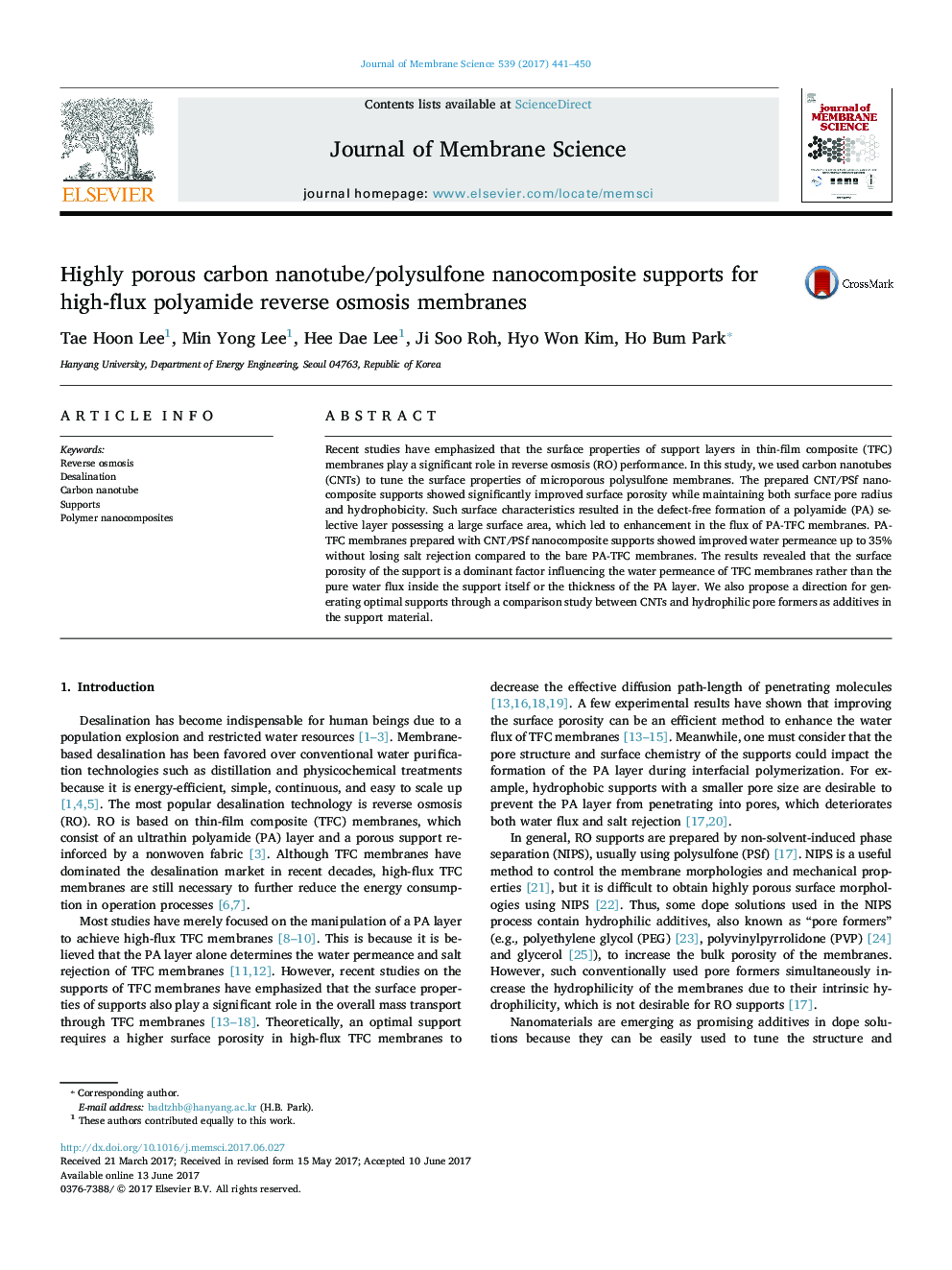| Article ID | Journal | Published Year | Pages | File Type |
|---|---|---|---|---|
| 4988803 | Journal of Membrane Science | 2017 | 10 Pages |
â¢Oxidized CNTs were incorporated into PSf support to tune the surface properties.â¢CNT/PSf supports showed enhanced surface porosity and pure water flux.â¢Defect-free and rough PA layers were obtained using CNT/PSf supports.â¢PA-TFC membranes using CNT/PSf supports showed enhanced water permeance.â¢A direction for preparing optimal supports are discussed through a comparison study.
Recent studies have emphasized that the surface properties of support layers in thin-film composite (TFC) membranes play a significant role in reverse osmosis (RO) performance. In this study, we used carbon nanotubes (CNTs) to tune the surface properties of microporous polysulfone membranes. The prepared CNT/PSf nanocomposite supports showed significantly improved surface porosity while maintaining both surface pore radius and hydrophobicity. Such surface characteristics resulted in the defect-free formation of a polyamide (PA) selective layer possessing a large surface area, which led to enhancement in the flux of PA-TFC membranes. PA-TFC membranes prepared with CNT/PSf nanocomposite supports showed improved water permeance up to 35% without losing salt rejection compared to the bare PA-TFC membranes. The results revealed that the surface porosity of the support is a dominant factor influencing the water permeance of TFC membranes rather than the pure water flux inside the support itself or the thickness of the PA layer. We also propose a direction for generating optimal supports through a comparison study between CNTs and hydrophilic pore formers as additives in the support material.
Graphical abstractDownload high-res image (269KB)Download full-size image
